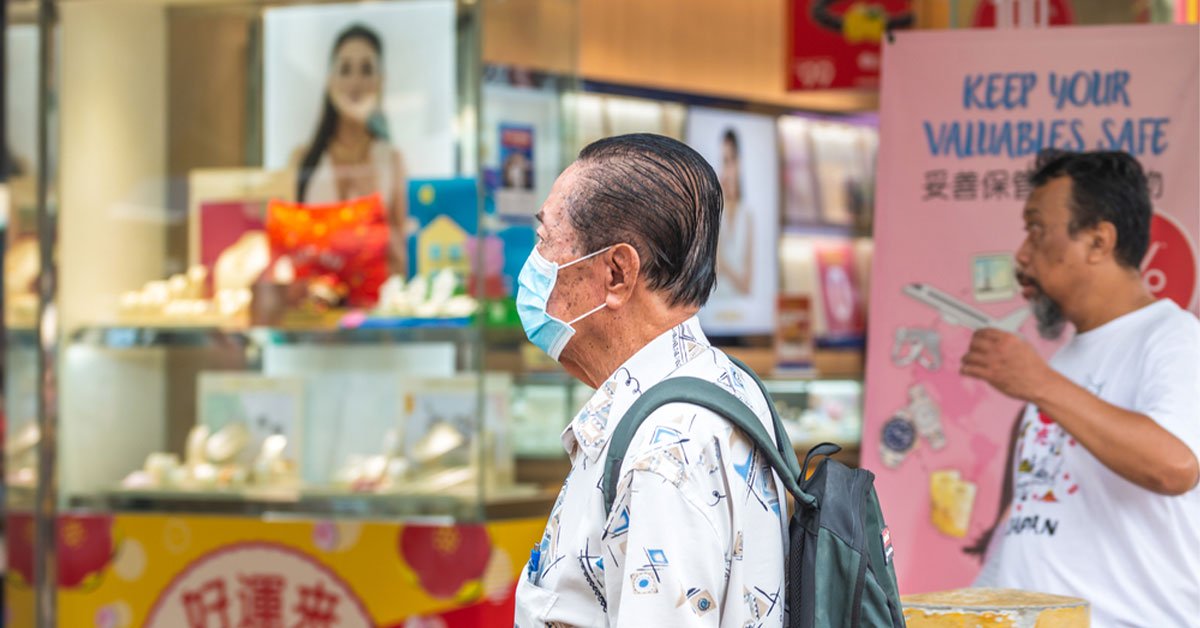On 17 Feb 2020, NUS released an article on the Covid-19 coronavirus titled “COVID-19: transmission more similar to H1N1, threat may erode with time”
National Centre for Infectious Diseases (NCID) researchers studied the coronavirus’ transmission mechanism and confirmed the virus to be similar to H1N1 and influenza.
It is less deadly but more infectious than Sars.
Experts believe that given time, the virus behind the Covid-19 outbreak will mutate into something milder, stabilise and eventually disappear.
Would that really be the endgame for Covid-19?
Let’s look at history then.
How H1N1 Ended in S’pore
More than 10 years ago, a pandemic worse than Covid-19 swept across the world. It was given the official name of H1N1-2009 and was first discovered in the US in Apr 2009.
Wait…why did no one throw bananas at the Americans and call them pigs then? Hmmm. Guess Asians are less xenophobic than our western counterparts, huh.
In Singapore, the Ministry of Health (MOH) raised the Dorscon level to yellow.
The first H1N1 confirmed case was a 22-year-old female student studying at Singapore Management University (SMU). She had travelled back to Singapore from New York on 26 May 2009 after a 10-day study trip.
So you’d think that the number of cases would gradually increase in the next few weeks.
Apparently not.
By the end of September 2009, 270,000 people were estimated to be infected.
Yes, we’re talking about almost 5% of the entire Singapore population.
18 people have died to H1N1 during this period.
The first case was a 49-year-old man with heart problems. The 18th and last death of the year is a 61-year-old man who has a history of diabetes, hypertension and end-stage renal failure.
More than 400 clinics were equipped with H1N1-ready Supplies of Personal Protection Equipment and the Tamiflu antiviral drug for mild H1N1 cases.
So no: if you think that the virus was contained like Sars, you’re wrong.
It kind of became like “chickenpox”; you can’t possibly isolate over 250k people, right?
And so…
The Aftermath
On 12 Feb 2010, MOH lowered the Dorscon level back down to green.
It was estimated that more than 415,000 people in Singapore were infected with H1N1 and more than 420,000 were given the H1N1 vaccine.
Yes, that means out of ten people you know, one of them possibly had H1N1 before.
A study conducted on the H1N1 virus between June and Oct 2009 revealed that most Singaporean adults are still vulnerable to the virus.
Join our telegram channel for more entertaining and informative articles: https://t.me/goodyfeedsg
Only 13% of the entire population has developed immunity to it so Singaporeans were advised to get vaccinations against H1N1 and the common flu.
Which leads to the next point:
H1N1 Still Here
The H1N1 virus has not disappeared from Singapore. In fact, it continues to be the predominant influenza strain here and all around the world.
Advertisements
Here’s the good news: most people with H1N1 can recover with rest and treatment. However, that doesn’t mean it’s 100% safe as some cases might still end up in hospitalisation or even death.
Most cases with severe complications happened to people with underlying medical conditions like:
- Asthma
- Diabetes
- Gross obesity
- Low immunity
- Pregnancy
Now, do note that all so-called mild diseases would have a fatality rate. Even chickenpox has one: it’s at 0.001% for kids and 0.02% for adults. The fatality rate for H1N1 is 0.03% – and as you can see, it’s almost like getting chickenpox as an adult.
Nevertheless, with Singaporeans getting vaccinated against the common strains of influenza (including H1N1) here in Singapore, we are no longer bothered (too much) by the swine flu.
Even in Taiwan which reported a huge amount of H1N1 cases with complications early this year, it’s because most of them didn’t have flu vaccinations.
Advertisements
The one exception was an elderly lady with underlying medical conditions.
Would Covid-19 Go The Same Way?
So if you’re wondering how long this outbreak will last? We don’t know. What’s troubling is that the numbers we have now might not be accurate; you’re reading places with extremely high fatality rate, some with low fatality and even places with zero cases.
Without exact figures, it’s hard to tell.
But if it’s anything like the H1N1 outbreak, it might be less than a year.
Whichever it is, remember not to hoard too many masks and wash your hands frequently.
And like a wise old man once said:

After all, it’s not just about surviving the Covid-19 outbreak. It’s also about surviving what comes after, right?
Meanwhile, do keep yourself updated by bookmarking MOH’s website.
Advertisements



